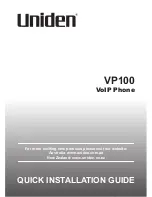
NAPCO Security Systems
GEM-P816 Installation Instructions
WI994A 10/99
Page 9
Control Panel
Choose a mounting location accessible to (a) a continuously-powered AC source, (b) system ground, a steel or copper
ground rod, ideally no further away than 10 feet, and (c) telephone lines (keep telephone wiring away from keypad wires).
Remove appropriate knockouts for cables. Place the control panel at a convenient viewing height and mark the mounting
holes. Attach the enclosure using screws suitable for the mounting surface.
Grounding
Connect the control-panel grounding screw to a long steel or copper ground rod driven deeply into the earth. Do not use
a gas pipe, plastic pipe or ac ground connections. Use at least 16-gauge wire. Make the run as short and direct as
possible, without any sharp bends in the wire.
Tamper Switches
Tamper switches may be installed to prevent opening of the control-panel door or removal of the cabinet from the wall.
Ideally, tamper switches should be connected to a zone that is active at all times, thus it may be necessary to program that
zone as a 24-Hour Zone or Day Zone. When used on a normally-open zone, normally-closed tamper switches (open
when set) should be wired in parallel. On a normally-closed zone, install Napco TPS-2 normally-open tamper switches
(closed when set) in series.
There are two places in the cabinet to mount tamper switches: (1) To prevent cabinet removal from the wall, there are
three mounting holes on the left side of the cabinet, another hole on the back that allows the switch button to contact the
wall. (2) To prevent opening the cabinet door, there are three mounting holes on the right side of the cabinet. When
mounted, the switch button should contact the inside of the door. Be sure to alert the user that opening the enclosure door
will cause a tamper alarm. Note: Each tamper switch is furnished with three machine screws for mounting, and one
self-tapping screw. The sole purpose of the self-tapping screw is to tap the holes for the machine screws; it may be
discarded after use.
Keypad
A keypad should be located near each exit/entry door. The keypad features a handy pull-up reference label. Before
mounting the keypad onto the wall, push the Sliding Label Plate (with label and felt backing affixed and handle facing
forward) down the guides at the rear of the keypad until it snaps into place. Once installed, the Sliding Label Plate cannot
be removed without first removing the keypad from the wall. Note: (1) The keypad fire and panic keys should not be
considered a substitute for a listed manual initiating device, such as a pull box. (2) Each GEM-RP1CAe2 includes
provisions for four additional zones. See ADDING EXPANSION ZONES.
If installing onto a double-gang box, insert mounting screws through the two vertical elongated holes on the left side of the
case and into the box. If the box is visible when viewed from the front, adjust the keypad vertically and tighten the screws.
Then, using hardware suitable for the mounting surface, add one or two screws at the right side of the keypad case
directly into the wall to ensure a secure installation. Note: Do not overtighten the screws! Uneven walls may cause the
keypad case to distort.
CAUTION: This equipment generates and uses radio-frequency energy. If not installed using conventional installation
practices for RF devices, it may cause interference to radio and television reception. It has been tested and found to
comply with the limits for a Class A computing device pursuant to Subpart B of Part 15 of FCC Rules, which are designed
to provide reasonable protection against such interference. However, there is no guarantee that interference will not occur
in a particular installation. If it has been found to cause interference to radio or television reception, which can be
determined by removing and reapplying AC and battery power to the equipment, the installer should try to correct the
interference by one or more of the following measures: reorient the receiving antenna; connect the power transformer to
a different outlet so that the control panel and receiver are on different branch circuits; relocate the control panel with
respect to the receiver.
M
ounti
n
g










































